If you’re on the hunt for affordable home decor that doesn’t compromise on style or charm, you’re in the right place. In this ultimate home decor thrifting guide, I’m sharing all my tried-and-true thrifting tips for scoring beautiful second-hand home decor — from vintage home goods to budget-friendly statement pieces. Whether you’re just getting started or want to learn how to thrift like a pro, this post will walk you through everything you need to know to make the most of your thrift shopping for home decor.
This post is a big one, so feel free to jump to the section you’re most interested in:
– Table Of Contents –
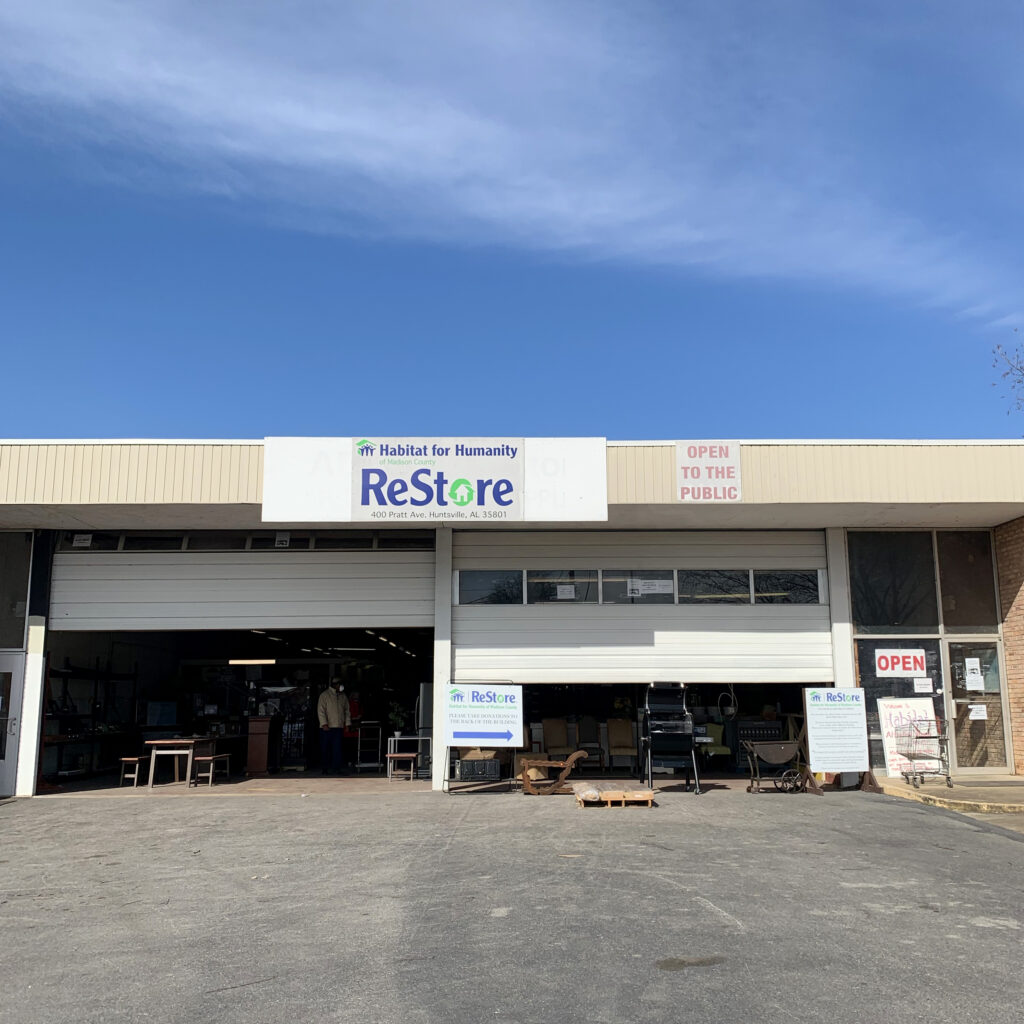
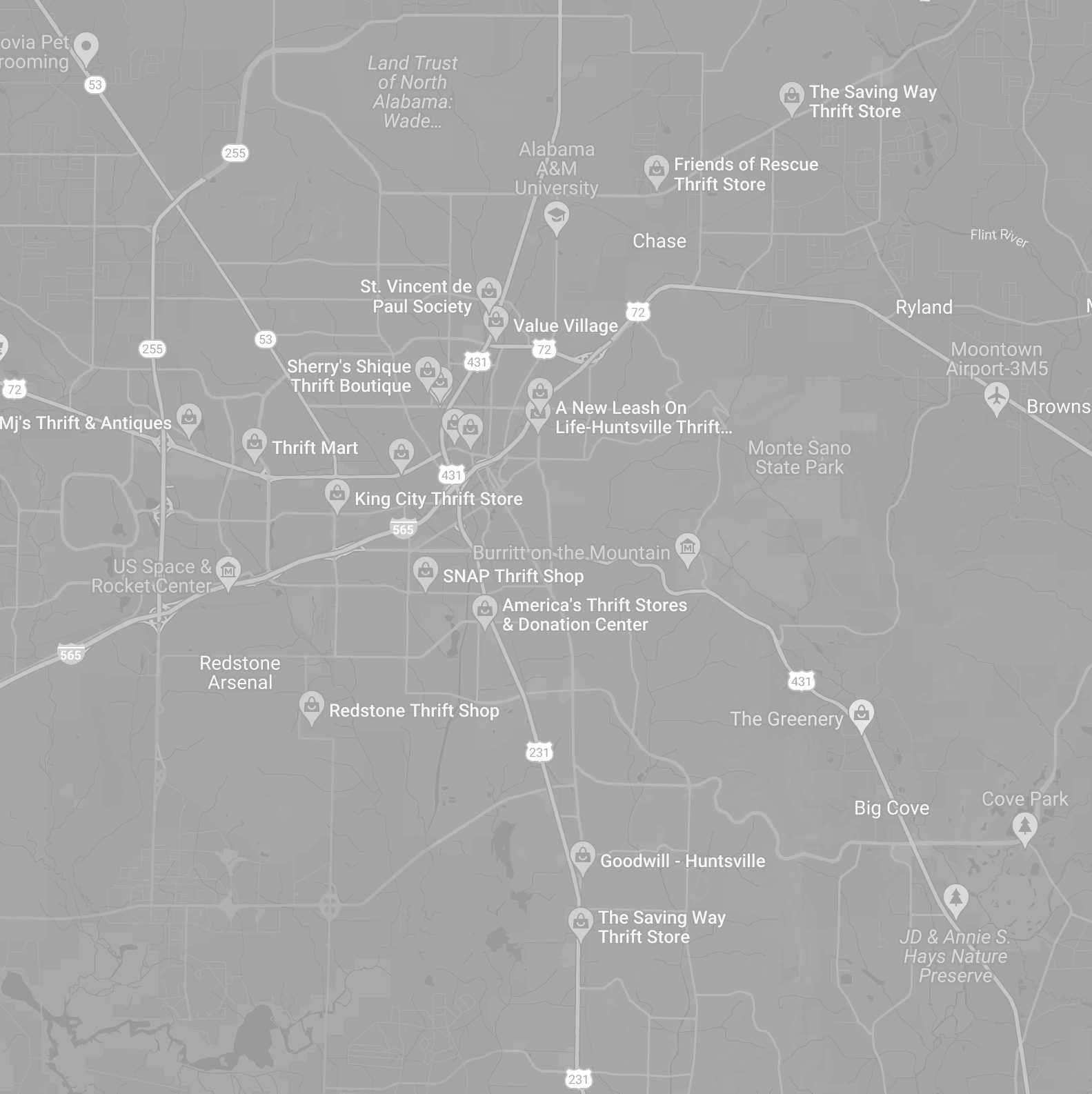
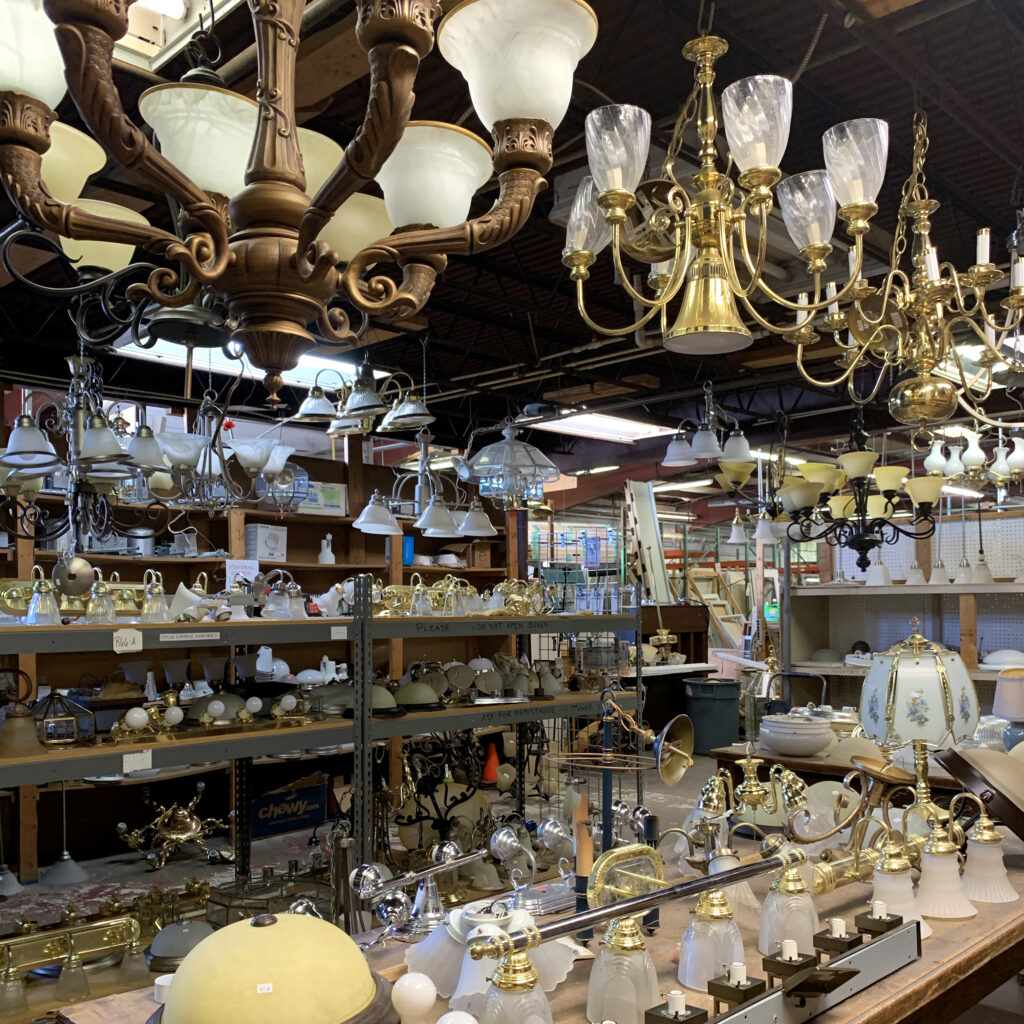
Always Start By Mapping Out A Route
Thrift shopping for home decor can be time-consuming, but there are a few tried-and-true tricks I’ve learned over the years that help maximize each outing — and score the best thrifted home decor along the way.
Where to Find the Best Thrift Stores for Home Decor Near You
The first step is to map out all the home decor thrift spots in your area. This sounds simple, but many amazing stores aren’t labeled as traditional “thrift stores.
The internet really is magic. I always start by just typing “(city name) thrift stores” into Google. This *should* pull up a list of every place in town that has identified themselves as a second-hand shop. It will also show any store where a visitor has describe them as such or potentially mentioned them selling second-hand home decor.
Search Tip: Try Alternative Keywords
If “thrift store” doesn’t pull up much when you search try:
- Second-Hand Store
- Consignment Shop
- Charity Shop
- ReStore, Goodwill & Salvation Army
- These are actual brand names, but can be a goldmine for thrifted home decor.
- Neighborhood Store
- ReSale
Local Bloggers
If you want to save time figuring out which shops are worth your time, check and see if you have any local bloggers who have listed out their favorite spots for snagging affordable home decor at the thrift store.
Always Be On The Lookout While Driving
I ALWAYS have my eyes peeled for anything that looks like it might be a charity shop while I’m out and about. I pay extra close attention in parts of town I don’t frequent, because that’s where I often find new spots for scoring thrifted home goods.
Estate Sales
While these are sort of in a category of their own, most thrifters consider them under the “thrifting” umbrella. So I’ll include how I source mine here as well.
- I always start with checking www.estatesales.net. This is the easiest more reliable way to find reputable estate sales near you.
- Facebook Marketplace is another great place to search for estate sales.
- Craigslist also has local estate sales listed under the “Garage Sales” category.
Where To Thrift Home Decor Online
Did you know that you can actually thrift ONLINE? So if you’re trapped at home and don’t have time to wander around the thrift store, here are some of my favorite places to find thrifted home decor on the internet:
- Facebook Marketplace – Stay tuned for a follow-up blog post on this resource!
- Craigslist may be dated, but you can find some gold here as this is what many older folks are more familiar with and tend to use more than these other sites.
- Goodwill Yep. You can shop Goodwill in your PJs right from home.
- Etsy To only see vintage goods, after you do your search, go to “All Filters -> Item Type -> Vintage”
- Ebay While eBay may be known as an online auction site, they now also offer a wide variety of ready to ship items for sale as well.
- Charish If you’re looking to snag a killer deal, this is probably not the site for you. However, it is a great place to find some really unique antique items!
*You may have noticed I left “antique shops” off this list as they, in my opinion, are not thrift shops. Second-hand shops for sure, but they fall outside of the “thrift” umbrella for me.
Plan To Hit Several Thrift Shops In One Area
The best strategy for thrift shopping for home decor is to map out a route that lets you hit several shops in a single trip.
This is usually pretty easy to accomplish as *typically* thrift stores like to cluster together in certain areas of town.
I like to look these up ahead of time on a computer. I then plan out my day based on where each shop is located and what store makes sense to hit first, second, third, etc. This makes my time home decor thrifting way more efficient.
Small Towns Vs. Big Cities: Where To Find The Best Thrifted Home Decor
If you want to score the best thrifted home decor at the best deals, head to the smallest towns near you. For starters, there are usually less people shopping at those stores, increasing your odds of finding a killer deal on quality vintage home decor. But additionally, these are places that many families tend to settle down in for the long term. So often you will find more valuable antique home decor at thrift shops and antique stores in small towns for better prices than you would in the big city.
Big cities however are usually better for scoring great deals on modern goods and for having a larger turnover of merchandise on a regular basis.
Choose Your Neighborhood Wisely
The trick to thrifting in a bigger city is often to find the largest chain of thrift stores in town. Then go to the location that is on the outskirts of the city, in an area with the smallest population. This is because most big thrift store chains have a linked donation hub. This hub then distributes merchandise to their various locations all around town. By visiting a less popular location, you are more likely to score a great budget friendly home decor find.
Another trick you can try is shopping thrift stores in the more affluent areas of town. Often these locations receive donations from the higher-income individuals who live in that neighborhood. The result being that you may be able to score more designer-made, high-end home decor at these spots. Be prepared for the prices at these second hand stores to be higher though.
Know What Each Thrift Store Does Best
Every thrift store has its strengths. Some are unbeatable for furniture; others shine when it comes to finding thrifted home decor items like vases, frames, or textiles. I like to keep a mental log of this each time I visit a new thrift store.
Even different locations within the same chain can vary widely in selection and pricing. One Goodwill might be a goldmine for thrifted decor, while another just doesn’t deliver in the same way. How to thrift like a pro? Prioritize the shops that you know usually have a good selection of whatever type of home decor you’re looking for.
Create Go-To Circuits for Easy Thrift Trips
Chances are you don’t have ALL DAY to go thrifting for home decor. If you’re anything like me, you’ll only have time (and the mental bandwidth) to hit 3-4 (if that) on any given outing. That’s why it’s important to develop different routes and circuits.
For example, say I have a route of 4 shops that are all pretty close to one another that I hit one day, well the next time I go I’ll choose a different route with a different 4 shops on it.
That helps ensure I’m not going to waste my time by just seeing the same exact stuff every time I go. I also love not having to think about WHERE to go, and being able to just hop in the car and hit my predetermined route for the day.
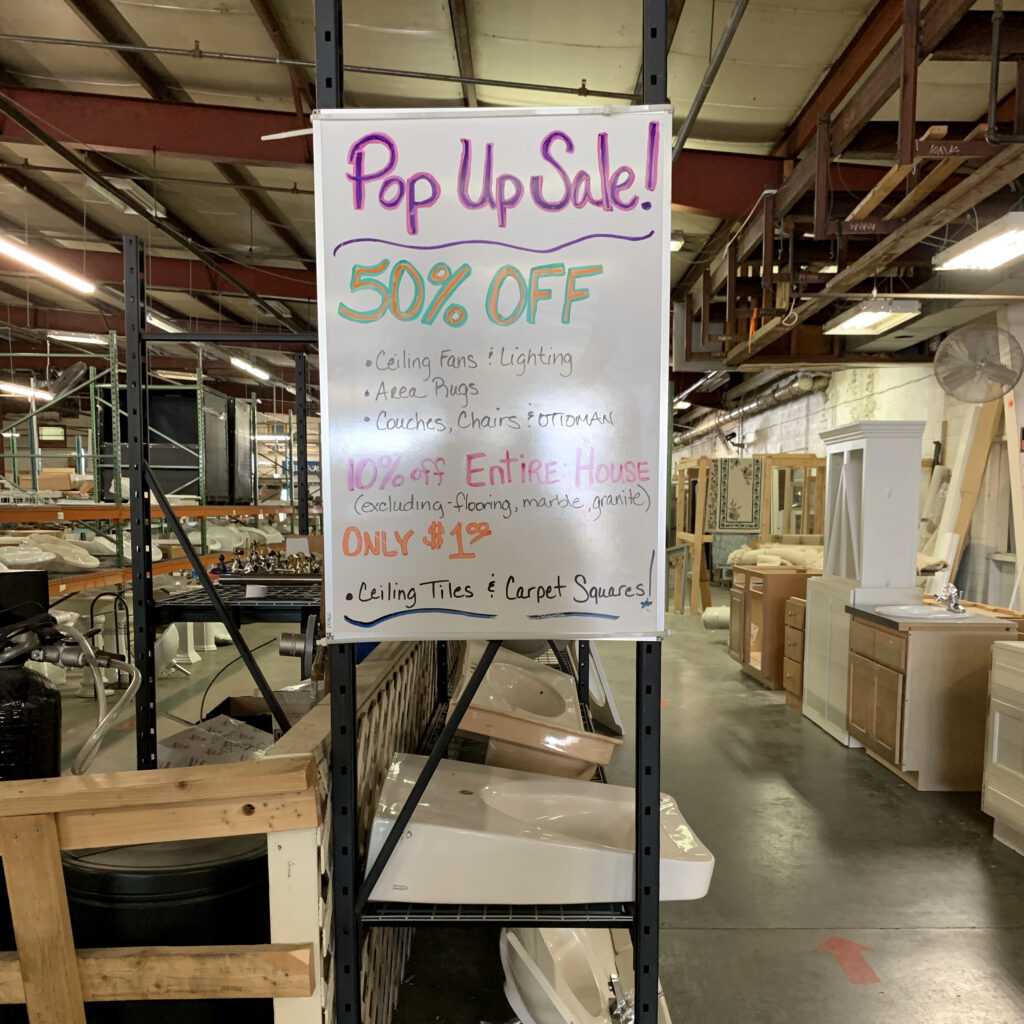
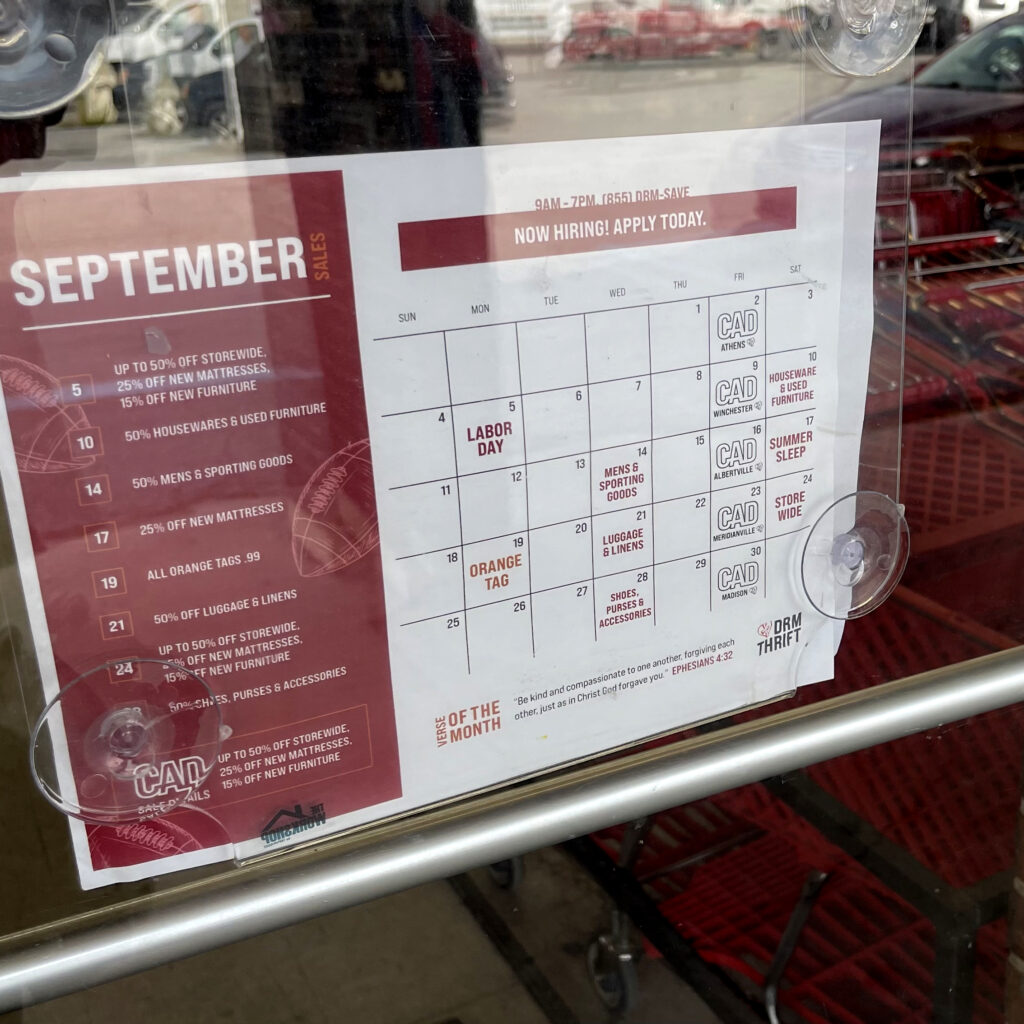
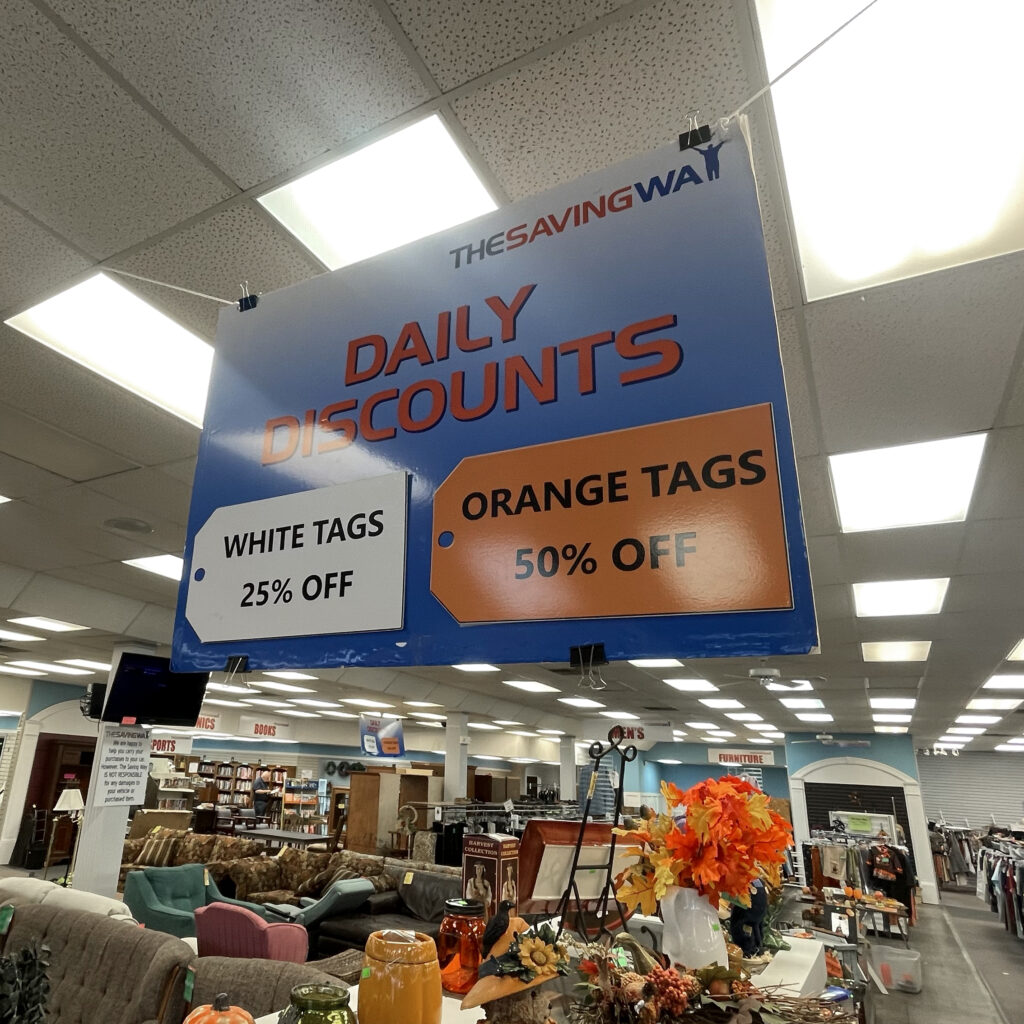
Pick Your Day Carefully
Along with planning your route, picking the right day for your home decor thrifting adventure can make a huge difference in what you’ll find and how much you’ll pay. A well-timed trip will ensure you have the best chance at scoring some amazing thrifted home goods.
Restock Day = Best Day For Thrifting Home Decor
If you take nothing else from this guide, remember this: find out your local thrift store’s restock day. For me, that’s Tuesday. Many of my favorite home decor thrift spots close on Mondays to restock the store, which means Tuesday mornings are packed with fresh merchandise — often including some of the best thrift store finds for home styling.
Pro Tip: Go early! People literally line up at the door to score the newest second-hand home decor treasures on these days.
Midweek > Weekends
Generally speaking, thrift shopping for home decor midweek — especially Monday through Wednesday mornings — tends to be better than on weekend in my experience. The exception to this is if there is a sale day over a holiday weekend (hello 50% off everything day). Otherwise, weekends often mean bigger crowds, picked over stores, and fewer unique thrifted home decor finds.
Mark-Down Days Are Your Friend
Just like asking if your store restocks on a certain day, I ALWAYS find out if a thrift shop has set mark-down days. These vary from store to store — some use color-coded tags (hello, 50% off blue labels on Thursdays). Other thrift stores might do 99¢ days, senior-discount days, student-discount day, kid-clothes-mark-down days, home goods mark down days or just general 50% off the entire store days weekly. FIND OUT. These are prime times to snag affordable home decor and stretch your budget even further.
Pay Attention To Special Sales
Along with regularly scheduled weekly mark-down days, many thrift stores also have dedicated sale days over things like holiday weekends where they mark down the entire store by 50%. Other times they might do a customer-appreciation event with special mark downs. Look around and see if you can find a calendar anywhere listing these types of upcoming sale events. If you don’t see one, ask an employee if they ever do them and if so when the next event will be.
Seasonal Timing Is So Important
While it may be obvious that you’re more likely to find holiday themed home decor hit the thrift store a month or so before the actual holiday arrives. There are a few other seasonal factors that you’ll want to factor in when timing your thrifting trips:
A New Year = New Donations
January and February are peak donation months thanks to people decluttering after the holidays and setting new year’s resolutions to “declutter” and “get organized”. Think of it like the Superbowl of home decor thrifting as most thrift stores are bursting at the seams with great merchandise during this time of year.
Changing Seasons Means Folks Are Purging
Another factor to take into consideration is changing seasons. Usually this is when people are clearing out their homes of things that no longer serve them. This means your thrift shop may experience a surge of seasonal items people no longer want for the season you’re about to move into OR the season you just moved out of.
Score Better Deals On Out Of Season Items
Seasonal shopping can also be important when wanting to score a great deal on a specific item. For instance, the chance of you finding a great deal on a ski suit is way higher in the summertime (when no one else is looking for or cares about ski suits) and less likely when it’s winter time and people are all on the hunt for winter clothing.
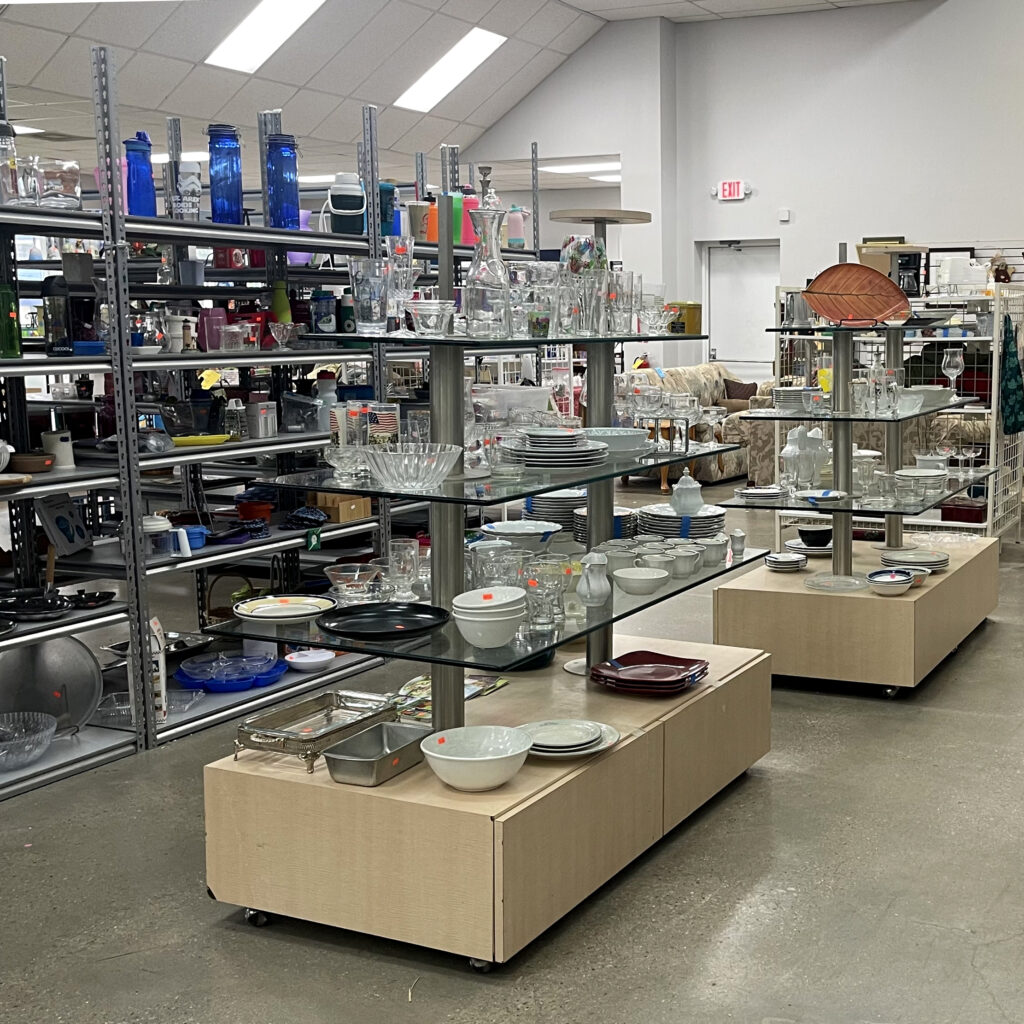
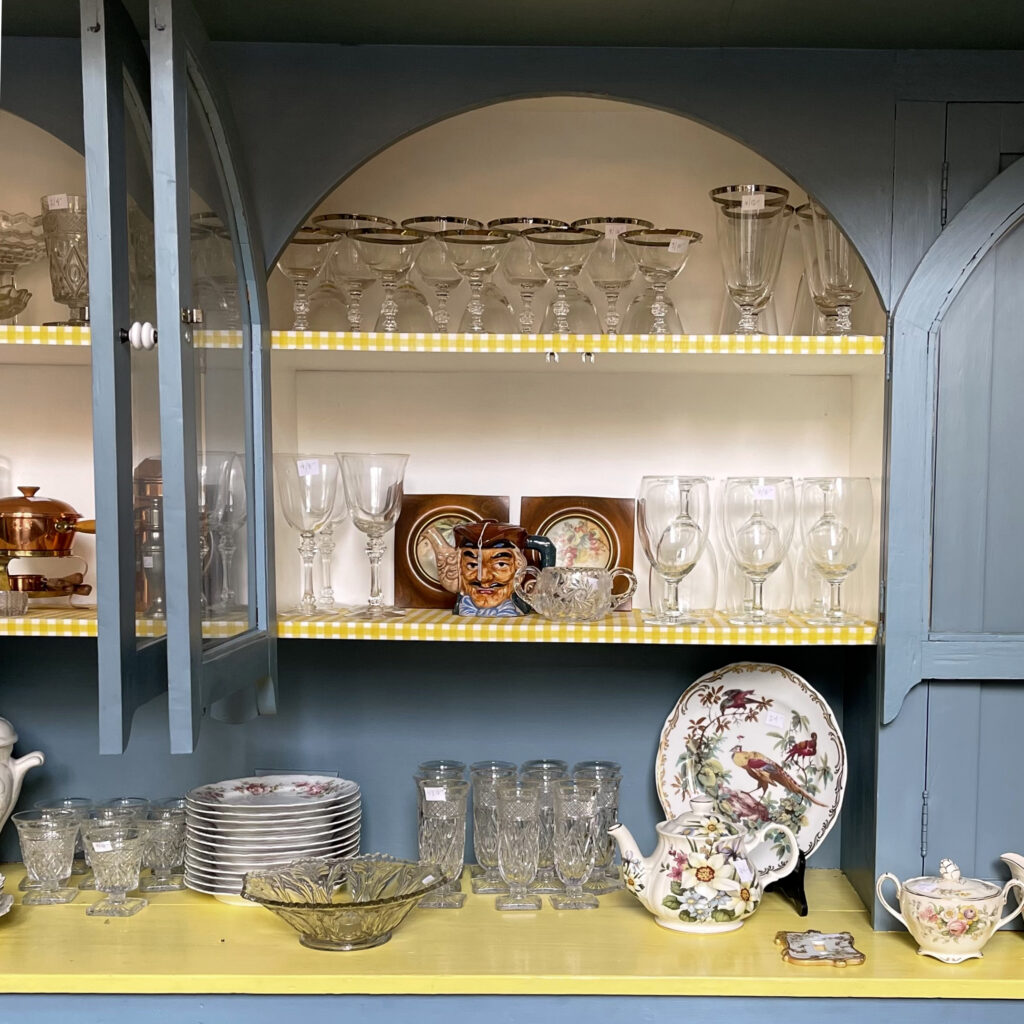
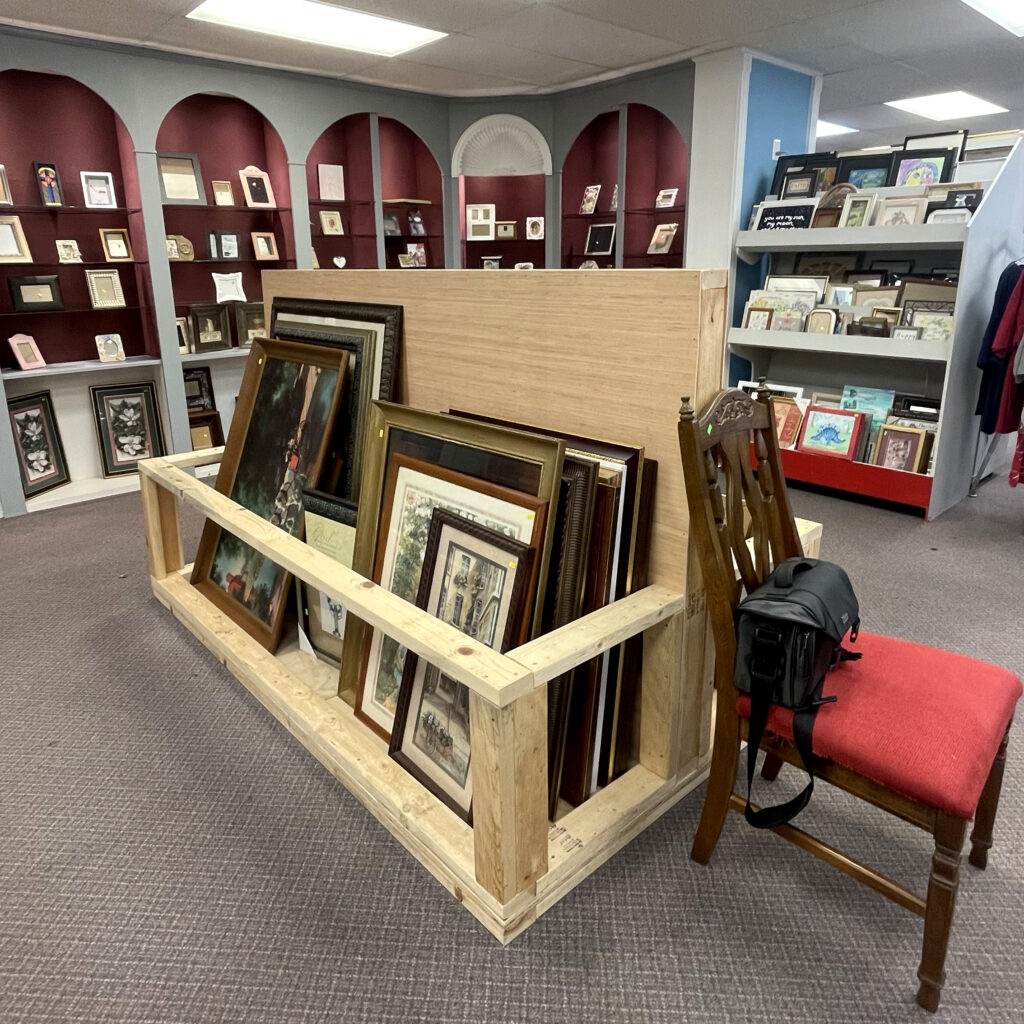
Create An In-Store Plan Of Attack For Home Decor Thrifting
One of the most common comments I hear about thrifting is how overwhelming the process can be—especially if you’re new to home decor thrift shopping. These tips should help with that.
Create A List Of All The Things You’re Looking For
Nothing is more overwhelming than going into a thrift shop and looking for “whatever”. So for your mental health (and success at finding awesome second-hand home decor) it’s important to have either a physical or mental list of what you’ll be looking for that day. I’ve seen some folks even create pinterest boards of items they need to help them stay on track.
As you get comfortable thrifting and feel less overwhelmed, you can try expanding your list to include more items or even more general categories.
Pick Sections Of The Store To Shop
To limit the mental energy I’m outputting at each location, I always refer back to my mental list of what items I’m looking for. Then I only shop those sections of the store, ignoring the rest of the shop like it doesn’t even exist.
For example, just looking for “decor” might feel like too much. So instead, try something like “vintage mirrors” or “ceramic vases.” Head straight to the home decor section of the thrift store, and begin your hunt there. If you have energy left afterward, explore a second category. Otherwise, preserve that energy for the next stop on your circuit.
Your goal is to leave before you hit the “everything is starting to blur into one big blob” head space.
Your mental energy is a limited resource. So if you came to the thrift shop for home decor, then stay in the home decor section. There’s no need to wander into the electronics aisle unless you’re also redecorating with vintage remotes (which, hey, no judgment). Doing so will only take away mental energy that you could spend looking for your primary objective (home decor) at the next stop on your list.
Set Time Limits Per Store If Needed
Another great tactic that works for many people is to set time limits for each shop you visit. This can help keep you focused, prioritize sticking to the home decor section of each shop, and preserves energy to hit all the spots on your list.
That said, some people (hi, it’s me) find any sort of time constraint stressful. I prefer to thrift on days when I don’t have anything else planned, so I can browse freely and fully enjoy the process.
You’ll have to experiment to find out what works best for you!
Try Shopping With A Set Amount Of Cash
If you struggle with impulse buys (especially when you’re in a cute second-hand shop full of affordable home decor), try bringing a set amount of cash. It makes decision-making a lot easier and will help you avoid buyers remorse.
You can also set metal budget limits per store before entering if needed.
Learn To Leave And Move On Immediately
Your time is valuable. If you walk into a thrift shop and can tell it’s not going to be a hit, don’t force it. Move on to the next one.
I usually do a quick sweep of the store and a visual scan of the home decor section. If nothing catches my eye right away, I’m out. No guilt, no second-guessing. Move on to the next one.
Mix Things Up
If possible, I always like to include one consignment store or antique shop in my route. Not everything will fall under “thrifting” strictly speaking, but these stops help reset my brain and keep the process feeling fresh while still sourcing unique, curated second-hand decor for my home.
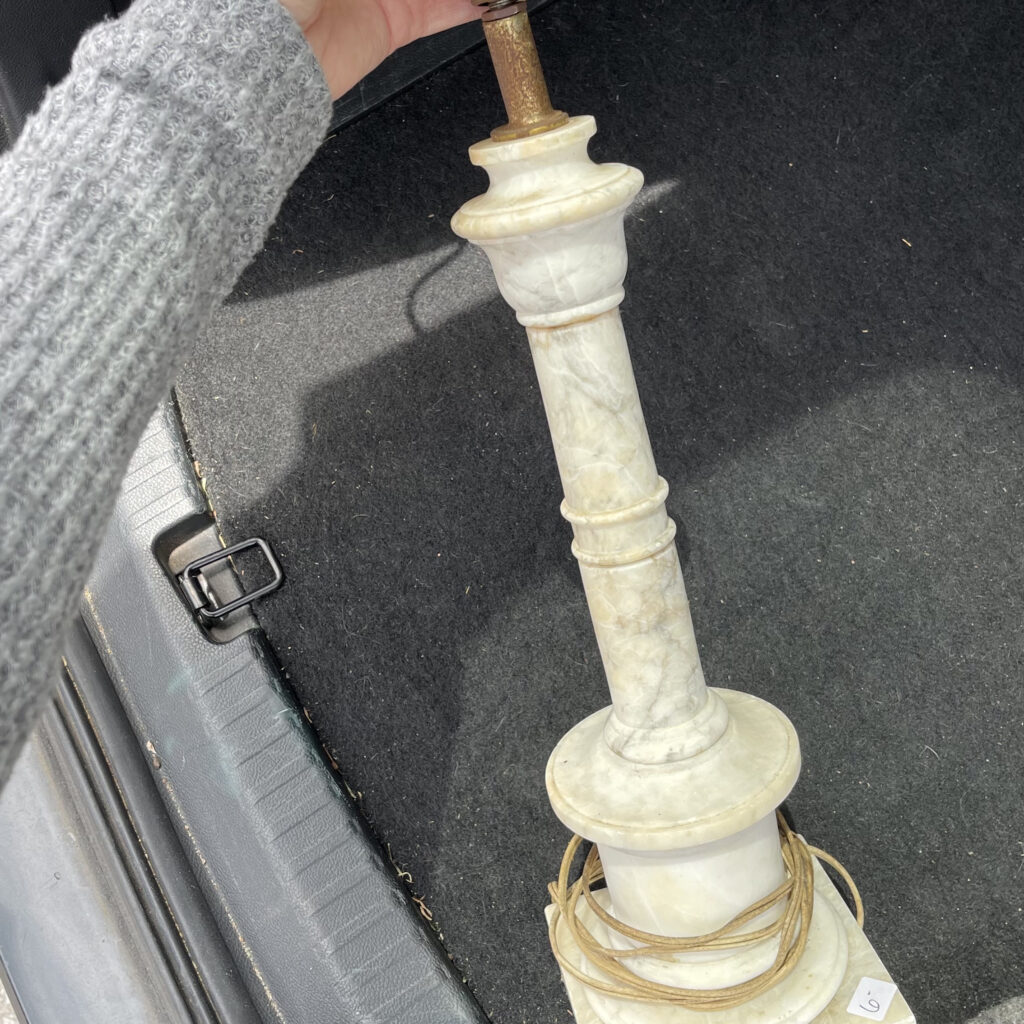
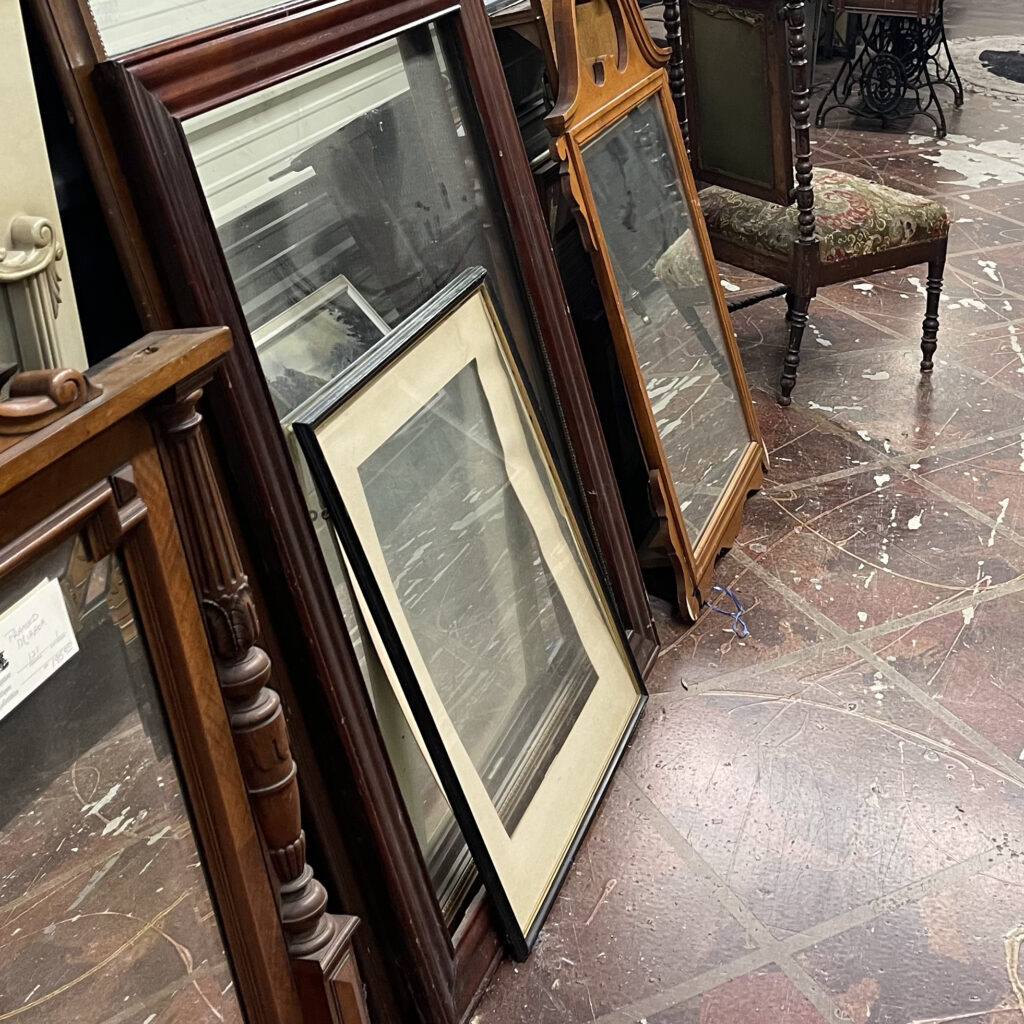
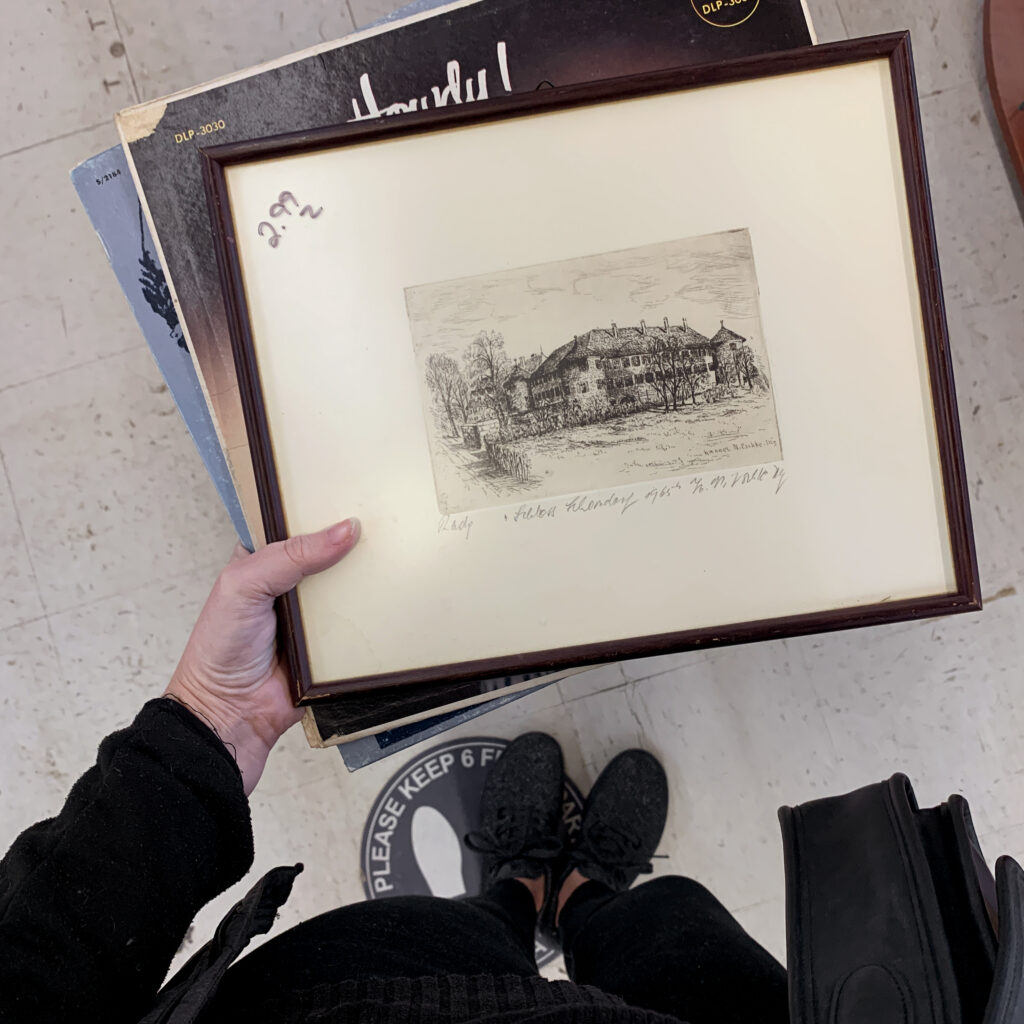
Thrifting Tips: How to Spot the Best Thrifted Home Decor
Alright, now that we know where we’re going and have a plan for what to do in-store to protect our mental health, here are my tricks for finding the good stuff and deciding what to buy (and what to leave behind) when shopping for thrifted home decor.
Do An Initial Browse By Color, Shape, Material & Texture
Every time I enter a thrift store, I head straight to the home decor section and scan for my favorite materials, shapes, and textures.
For me, that means looking for things like: brass, marble/stone, iron, crystal, old wood, leather, and silver. This strategy helps cut through the visual clutter and narrows your focus to items you’ll actually want to use when decorating with second-hand finds.
Don’t Be Afraid To Move Stuff Around & Dig
If you want to find those true treasures for your budget-friendly home refresh, you’ve got to be willing to dig. The good stuff is often tucked behind things no one wanted—or even hidden under a dusty pile of items no one else has bothered to move.
Pick things up. Move them around. Do what you have to do to see what’s buried in the back.
Walk Both Ways Down An Aisle
This trick never fails to amaze me. If you really want to make sure you don’t miss anything at the thrift store, walk down every aisle from both directions. It is AMAZING the different things you will see when you approach items, or a booth or a table even, from the opposite direction than the first time you scanned it from. Items hit the light differently, or a detail will suddenly pop that you didn’t notice before.
Come Prepared
I always carry a small measuring tape with me so I can ensure the home decor I just thrifted will fit in my car and into the spot I want it to go in my house. This will save your from falling in love with something that’s too big for your space.
Having a bit of cash on hand is a good idea as well. Many thrift stores have a minimum sale amount you have to meet before they will allow you to make a purchase with a credit/debit card. Having a bit of cash with you helps this from becoming a problem.
I also always have a bottle of hand sanitizer in the car I can use after each stop. You want this too, trust me.
And finally, always ensure your phone is fully charged before you go. Google is going to be your best friend (helping you check retail prices and styling inspo for the thrifted home decor finds you spy) while you’re out and about, so you want to make sure you’ve got the juice you need to last your entire thrifting trip.
If You Even *Maybe* Like A Thing, Set It In Your Cart
Thrift stores can be overwhelming, and sometimes it’s hard to know in the moment what to buy and what to leave behind. So my trick for this is that if I’m *maybe even considering possibly buying something* it goes in the cart. Because there is nothing worse than deciding, yes you want it, going back to grab it, and having it not be there anymore.
I do the same thing at estate sales. If I am considering something, into my arms it goes while I continue to look around.
Walk Around With Your Selections Before Buying Them
Second-hand shopping can be very addictive because of the adrenaline rush you get when finding a good deal on an expensive or rare item. HOWEVER, sometimes that hit of happy feels leads us to purchase things we neither want or need simply because “It’s such a good deal!” Here’s my trick for this.
Once I’ve loaded my maybe-items into my cart, I walk around. Even if I’ve finished shopping, I’ll move to a different section of the store and browse for a bit. Anything to KILL TIME. This helps me distance my body from the endorfin hit of my *great find*. That way I can go back and reconsider everything in my cart with a less-biased brain and ask myself 9 important questions:
My 9 Important Questions I Ask Myself
Once some time has passed since my initial find, I will look over all the items in my cart and ask the following questions:
- Did I love this before I saw how much it cost?
- Is this something I had on my list of items I need?
- Can I, in this moment, tell you EXACTLY where it will go in my house?
- Is it a high-quality item?
- Is it *exactly* what I was looking for or am I just buying something to buy something?
- If I’m unsure it will work for my needs, could I resell it for what I’m about to pay?
- Does it need to be repaired or fixed?
- Could I make some decent money selling it to someone else?
- If the answer is YES to 6, 7, or 8, I then ask myself “WILL I ACTUALLY DO THAT!?”
I won’t lie, it takes A LOT of very honest soul searching to answer some of those questions and there are times when it is physically painful to walk away from an item. But you have to learn to trust yourself and the rules you lay out if you want to become a pro at thrifting for home decor.
Haggling
Different people have different views on haggling, but here’s my personal 2 cents on the topic.
If an item is damaged, in any way, I ask about a discount. If an item has been at a shop for a while and hasn’t sold, I give them an offer to see if they’ll take it. Otherwise, I personally don’t like to haggle. Especially since most of these places are donating the proceeds to charity.
Most estate sales (if run by a professional company) will not allow haggling or offers until the last day. Even then it’s typically only the last hour of the last day. However, if a private individual is running the sale, chances are you’ll be able to haggle a bit more.
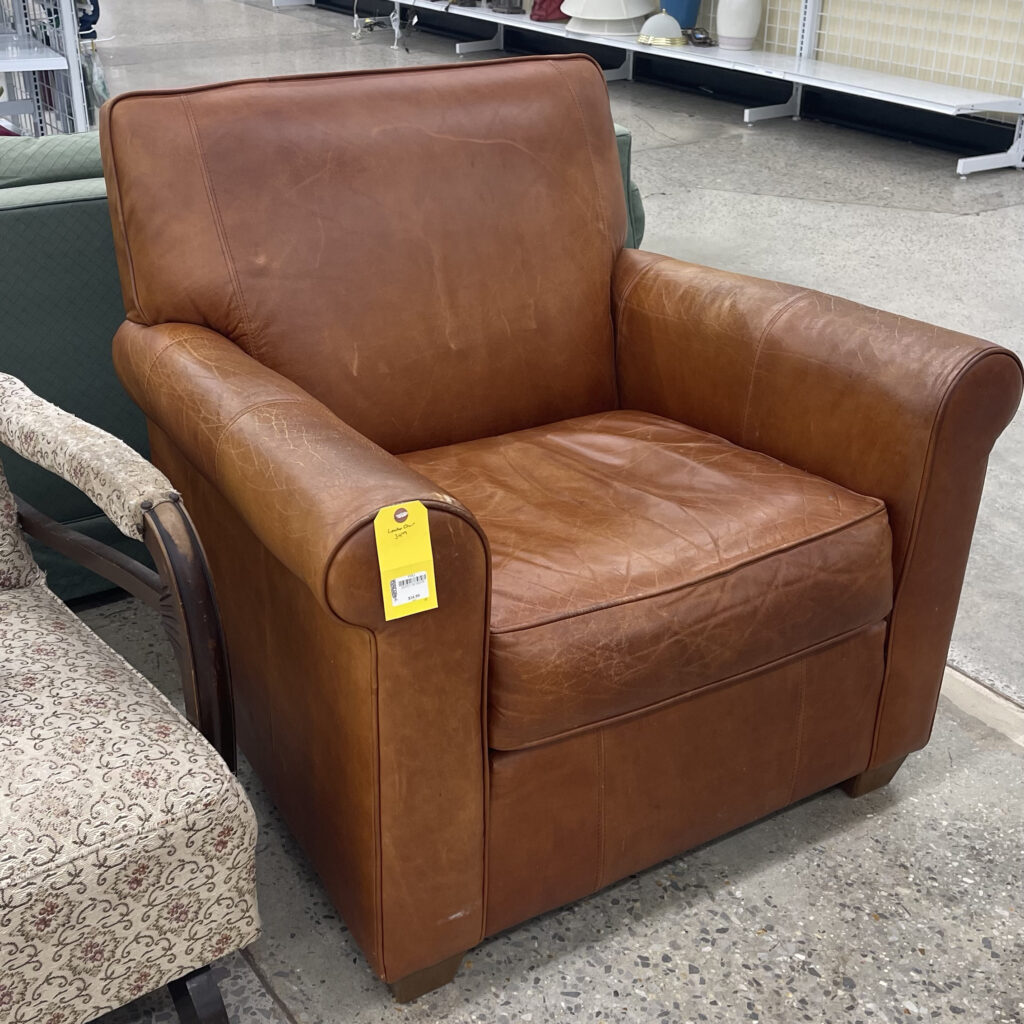
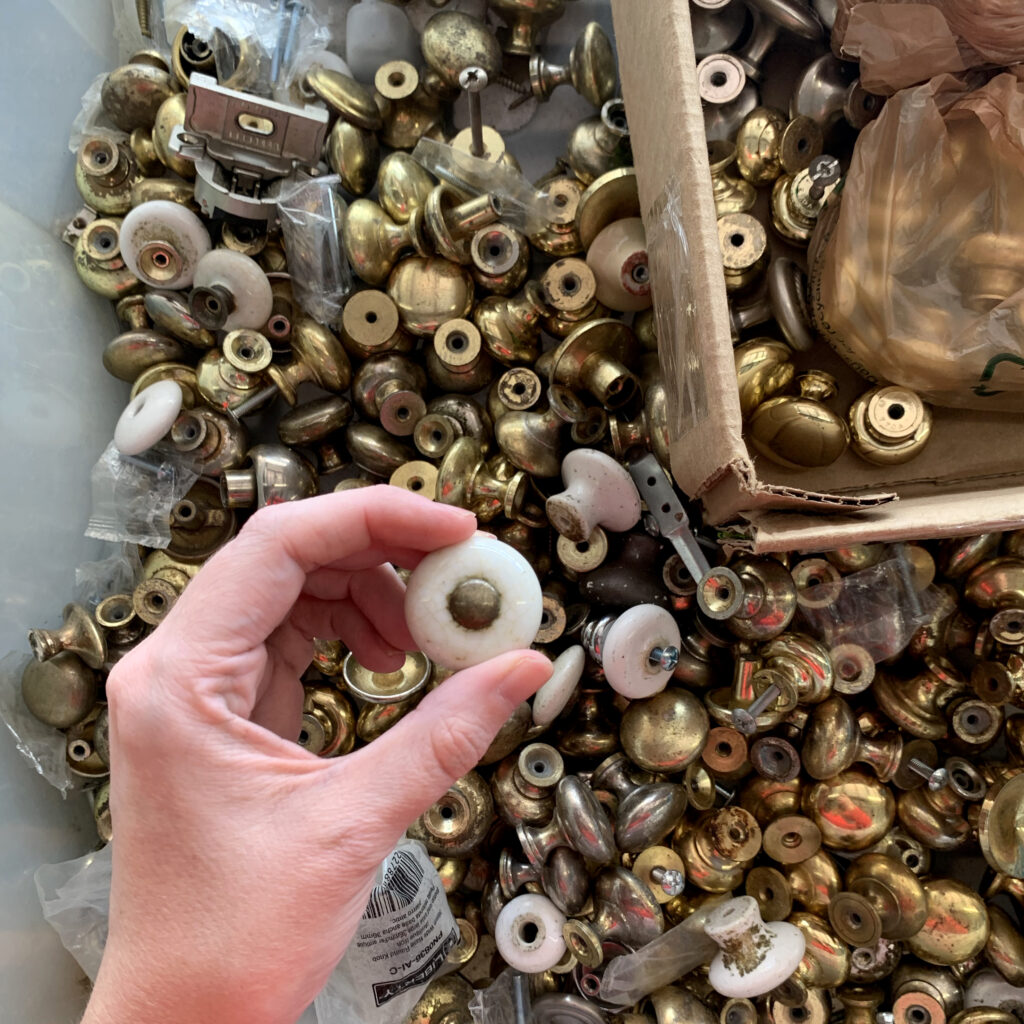
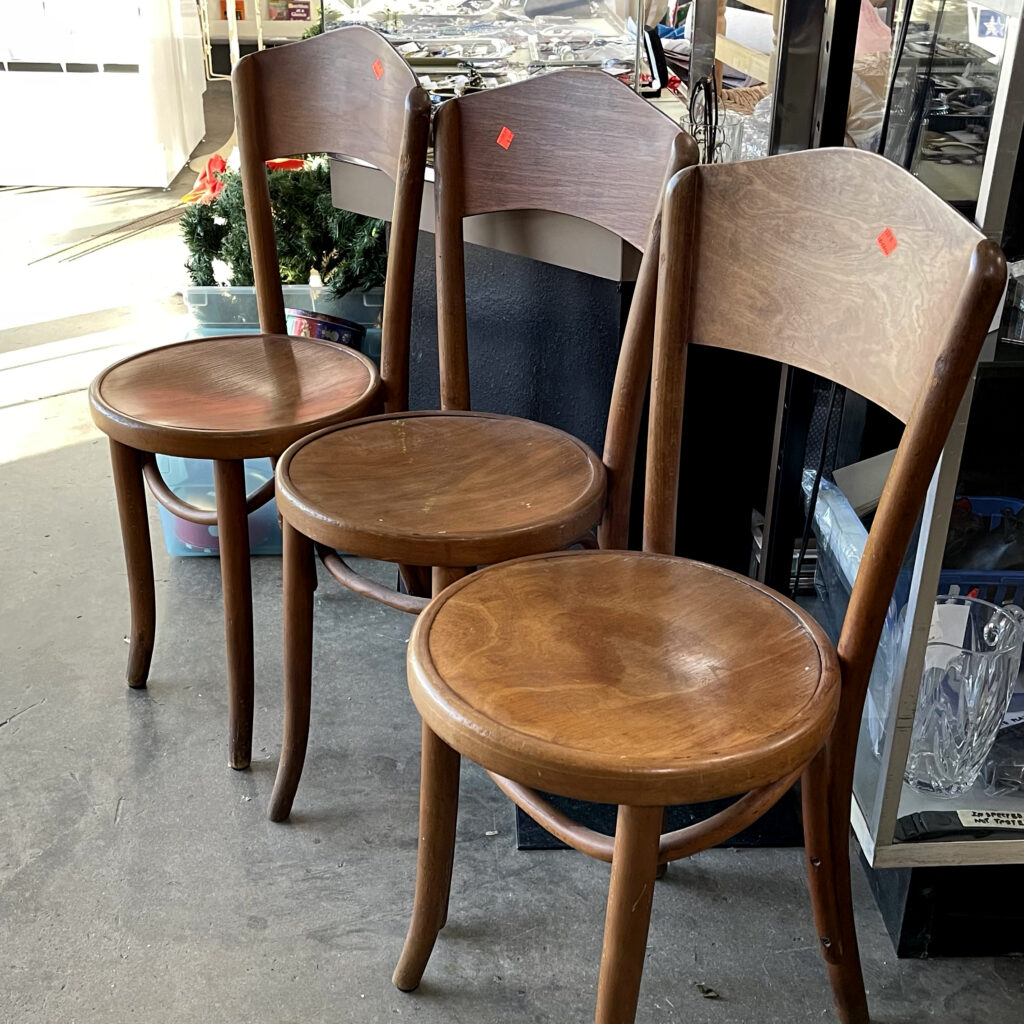
How to Develop Your Eye for Thrifted Decor and Vintage Finds
The final piece of the puzzle you need when second-hand shopping is developing a good eye. Like a lot of things in life, this is a learned skill that you will develop over time with practice. Here are a few good ways to start training yourself on what to look for.
How To Tell If Something Is A High-Quality Item
While having an in-depth knowledge of makers marks, brand names and manufacturing history is obviously the most *reliable* way to quickly know the quality/value of an item. There are a few other low-level techniques you can employ that require none of that knowledge.
Is It Heavy?
*Most of the time* if an item weighs a lot, it’s usually worth more money because more material was used in its creation (vs cheaper items that use cheap fillers or empty space inside an item to cut down on costs.
The exception to this rule is glassware & china. When buying glassware and china, the thinner and lighter the item, the higher quality. This is because it takes much more skill to create something thin and delicate out of those materials without breaking them than it does their thicker counterparts.
How Was It Constructed?
When looking at furniture, you want to examine how the piece was put together. Look at the joints on the drawers. Are they made with interwoven dovetail joints, or are they just flat boards screwed together? A lot of people will assume a home decor items made with veneer are low quality, but that is only the case in items made after the 1950s when veneer shifted from something that was a skilled craft to something manufacturers started using to make cheap furniture appear more expensive. So joinery and weight are still going to be better indicators.
What Is It Made Out Of?
It goes without saying that something made out of plastic is probably worth less than something made out of solid wood or metal. But be careful, because it pays to know your materials since something made out of “Bakelite” for example (an early type of plastic made around the beginning of the 1900s) could easily be mistaken for modern plastic, when in fact it may be worth hundreds of dollars. So it pays to know your materials and their value!
Was It Made By Hand Or By A Machine?
A final indicator of quality is hand workmanship vs something machine made. So, for instance, a painting that has no texture to it was probably digitally printed on the canvas, vs a hand-painted painting would show brush strokes and more texture on the surface of the work. Same goes for china that looks like the design was printed on vs hand painted. If you can tell a human hand was involved in making something, it’s usually worth more.
Pay Attention To What You See In Antique Stores
A great way to develop your eye for quality merchandise is to visit antique stores and pay attention to what items look like, what they feel like when you handle them and then what the seller in charging for said item.
Most of the time, antique dealers have access to evaluation website that help them price their goods and items they sell. You might not have access to those sites but you do have access to their merchandise they have priced. Paying attention to what you see and what they charge can help you better identify quality items in the wild.
Google Is Your Friend
One of the blessings of the digital age is that it’s usually pretty easy to evaluate an item in store using just your phone and a quick google search. I do this two ways.
If the item has a manufacturer’s label (so I know the brand name), I will do a normal google search using the brand name as a key word and a few describing features. I’ll then click over to the “shopping” tab and browse the results. Typically there will be a charish, ebay or etsy listing for a similar item that will help tell me its value.
If an item *doesn’t* have a brand name on it, I’ll try a google image search instead and look for an item closest in appearance to the one I’m currently evaluating.
If you can’t find *anything* remotely similar to your item, that may be an indicator that it is in fact rare and therefore more valuable.
Seeing The Style In The Visual Chaos
Finally, along with developing your eye for quality is developing your eye for style in the midst of visual chaos.
It can be hard to imagine what the lamp you find sitting amongst a pile of randomness would look like cleaned up and in a properly designed room. Here’s my thoughts on how to help with that.
First of all, move the item you think might possibly have potential. Get it away from the visual clutter it’s currently hanging out in and put it somewhere with a neutral backdrop so you can see it on its own. If you’re still having problems picturing it in your space, try these tricks:
Tricks For Visualizing An Item Elsewhere When You Can’t Do It In Your Head
- If possible find something else in the store that is made out of a materiel you have in your home (a similar wood tone or color or metal possibly) and set it next to that.
- Bring samples from home of the items in the room you are designing (color chips, fabric swatches, etc) and hold them up to your item to see what they look like together.
- Photograph the item in the store with your phone on a plain neutral backdrop and then overlay that photo on top of a picture of the room you are considering it for with an app like canva or even the photo sticker option inside instagram stories.
- If using IG, you don’t have to post a story story slide to do this. Just open your app, pretend to make a story slide using a picture of the room you are designing. Then tap the stickers button, tap add a photo, then select the thrift store pic you just snapped. This should overlay your photo on top of the image of your room so you can see how they look together.
Go Often
The bottom line for why some people score such good deals when thrifting and some don’t is that you have to GO. ALL. THE. TIME. Most of the time you will find absolutely nothing, but then every once in a while you will strike gold, but you typically don’t find the gold unless you are there often enough to see it before someone else snags it first.
Be Ok Leaving With Nothing
Along with going all the time, the second biggest rule when thrifting is being ok leaving with nothing, and knowing when to move on.
Your time and money are precious, so you don’t want to waste it. You need to get comfortable with saying goodbye, leaving empty handed and moving on. Resist the urge to buy something just to buy something. There is really great stuff out there I promise, and you don’t want to spend your potentially limited funds on something that you don’t truly connect with just to buy *something* so you didn’t “waste a trip”.

Don’t Forget To Pin This Post & Subscribe!
Hopefully this post helps get you started on your thrifting adventure! Be sure and subscribe to my blog so you don’t miss out on more great thrifting tips and tricks! What thrifting topics should I cover next? Let me know in the comments below!

2 thoughts on “My Ultimate Guide To Thrifting: Tips & Tricks For Scoring Beautiful Second Hand Home Decor”